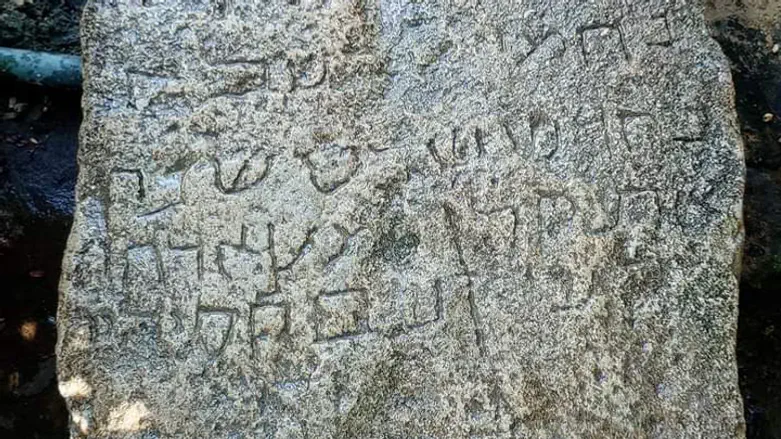
An ancient tombstone with an inscription in Hebrew, which was found in Ramanthapuram in the state of Tamil Nadu in southern India, may shed light on a forgotten Jewish community in the country.
Thoufeek Zakriya, a researcher of Jewish history and a Hebrew calligrapher, was the first to decipher the inscription, saying that the tombstone dates back to 1224 or 1225.
"This means that it is older than the tombstone of Sara Bat Yisrael in Chennamangalam, in the state of Kerala, which is considered to be the oldest Hebrew tombstone ever identified in India," Zakriya told the Indian website THE WEEK.
Zakriya, who now lives in Dubai, is an Indian Muslim artist who does calligraphy in Hebrew, Arabic and several Semitic languages. He was born and raised in the historic town of Kochi in India, which had a glorious Jewish history, and loves history.
Hathim Ali, 32, a young chemical engineer and history lover from Ramanthapuram, brought the tombstone to public notice. "One of my friends told me about this tombstone that was found on a farm," said Ali.
"I went to check it but realized that it was neither Tamil nor Arabic. I thought that it might be Hebrew." Even though the government authorities were notified, no one came to check it.
Zakriya, who works in the United Arab Emirates, heard about the discovery in the Indian media, by the president of the Ramanthapuram Archaeological Research Foundation. He contacted Hathim, who sent him pictures of the inscription to decipher.
"The Hebrew inscription bears the date 1 Shevat 1536 or 1537 of the Seleucid period," he explained. The Seleucid period is the first system of counting the number of years, introduced by the Seleucids in Western Asia. Jews adopted the counting of the period after Alexander the Great conquered the area, and Seleucids subsequently ruled over the Jews.
The Seleucid Kingdom was a Hellenistic state that was founded in 312 B.C.E, by Seleucus I and ruled by the House of Seleucus, according to Wikipedia. At the height of its power, the House of Seleucus controlled Mesopotamia, Asia Minor, Syria, Israel, and the Iranian plain up to the Indus River, and was largest country in the Hellenistic world. Antiochus IV of the Hanukkah story was a Seleucid king who died in 164 B.C.E.
"When they converted the dates from the Seleucid period to the accepted period, they found that the date on the tombstone is approximately equal to January 1, 1224 C.E., or January 18, 1225 C.E.," noted Zakriya, adding that not every line can be deciphered because of damage to the tombstone. "That is why I could not find the name of the deceased or of his father, but I could see a part of the name that looks like Nehemiah in Hebrew. An initial analysis shows strong influence of Yemenite Jews in the pattern of the tombstone."
